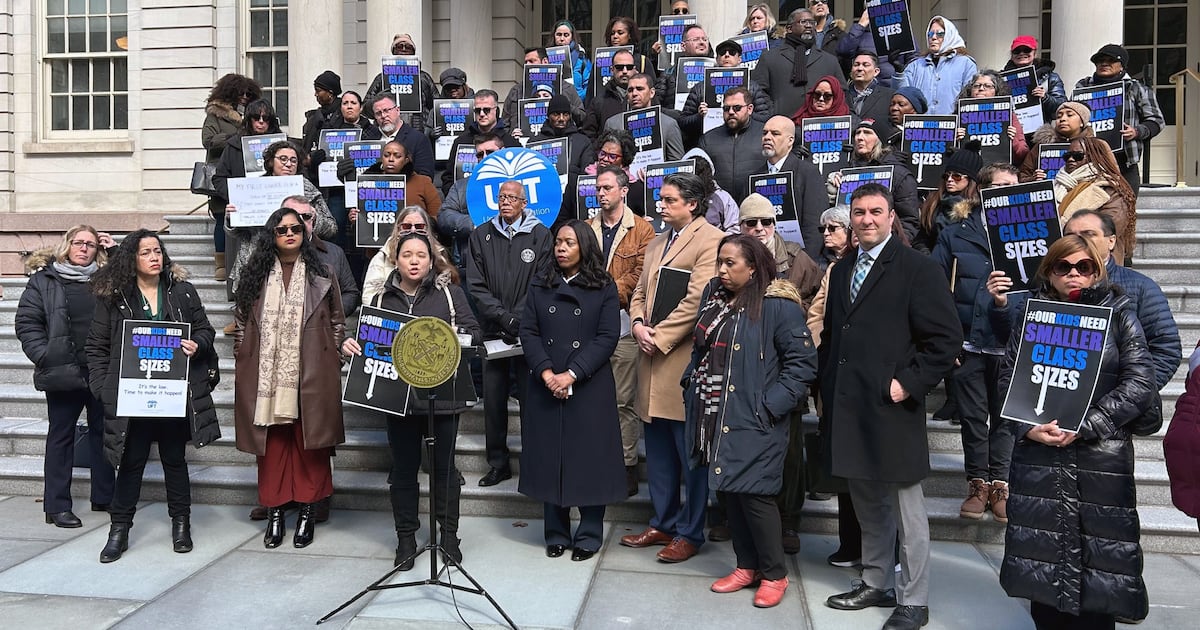During this summer, a team of students from MIT embarked on a journey to the sou …
New York City considers prioritizing teacher hires to lower class sizes
Emma Wordsmith

Upcoming school year may bring increased pressure on principals with open positions to prioritize hiring teachers to meet the state’s class size law, as per officials at a recent New York City Council meeting.
State law mandates that kindergarten to third-grade classes have 20 or fewer students, fourth to eighth grades have a maximum of 23 students, and high school classes have 25 or fewer. The law is phased in, with 20% of classrooms needing to comply by September this year, 40% by September 2025, and full compliance citywide by September 2028.
The Education Department has been largely successful thus far, with about 40% of city classrooms already meeting or staying below the limits, officials confirmed.
To maintain compliance and prepare for stricter requirements ahead, the Education Department may implement policy changes next school year, indicated Deputy Chancellor for Operations Emma Vadehra.
One potential change involves urging schools to prioritize teacher hires when there are vacancies, departing from the usual practice where principals have autonomy in hiring decisions and budget allocation for various roles.
First Deputy Chancellor Dan Weisberg cautioned against a top-down approach to school hiring, emphasizing the significance of principals’ judgment in decision-making.
Details on the new directive are scarce, with existing hiring restrictions in place beyond class size laws, such as staffing for students with disabilities and subject requirements.
Approval from teachers and principals unions is needed for the plan, with communication expected by spring to allow schools to prepare for the upcoming hiring season, Vadehra noted.
The president of the Council of School Supervisors and Administrators expressed concern, noting the need for a balance of teaching staff, support personnel, and supervisors to sustain effective instruction amid changing requirements.
While the idea of prioritizing teacher hiring is welcomed, the United Federation of Teachers highlighted the need for considerations on additional staff like counselors and deans, raising caution over the preliminary nature of the plan.
Proposed Changes for the Education Department in the Near Future
Officials mentioned deliberations on a recommendation to limit the usage of $215 million in funding through the state’s Contracts for Excellence program, emphasizing a potential focus on reducing class sizes.
C4E funds, distributed based on student need, can currently be utilized for various purposes like teacher development, pre-Kindergarten classes, and support programs for diverse learners.
A shift to earmark this funding solely for reducing class sizes is under consideration, affecting over 1,500 schools obtaining an average of nearly $141,000 each.
Anticipated Challenges and Costs
The Education Department foresees significant challenges as the class size law reaches full implementation, projecting a need to hire an additional 10,000 to 12,000 teachers to align with legal requirements, costing between $1.4 to $1.9 billion annually.
Approximately 500 schools are expected to face space constraints to meet class size standards, presenting cost estimates of $22 to $27 billion for new facilities, considerably exceeding current budgets.
Although the state’s Foundation Aid has increased, Education Department officials contend that additional funding is necessary to address various needs, including supporting low-income students and complying with charter school expenses.
Concerns arise over potential resource reallocation from schools with higher student needs to those with affluent populations, posing complex challenges for equitable distribution.
Limiting enrollments in overcrowded schools is a cost-effective solution, but this strategy may encounter resistance from parents, particularly in high-demand schools where student choices are a priority.


